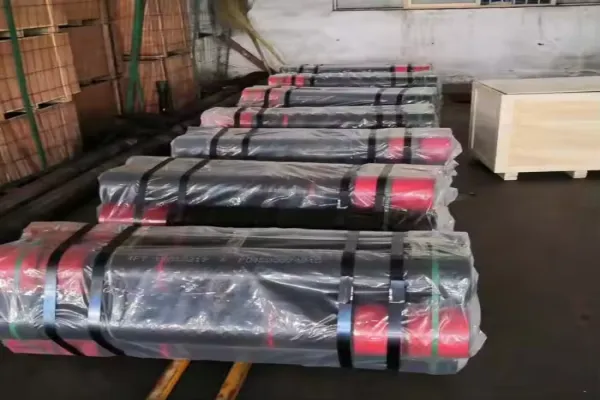Casing Pup Joints Meaning
A casing pup joint is a short casing pipe used in oil and gas wells. Unlike standard casing, which typically comes in lengths of 40 feet or more, pup joints are much shorter—usually between 2 and 10 feet. They are threaded at both ends and made to match the diameter, weight, and grade of the main casing string.A Casing Pup Joint is a short section of casing and tubing used to adjust the length of the casing string. Unlike standard casing, pup joints are typically shorter than the API 5CT range R1. Despite their length, they maintain the same thread type, grade, and diameter as the casing they connect.
These joints help achieve accurate well depths without cutting longer pipes. In addition, they offer excellent flexibility during drilling, cementing, or completion. They are easy to handle and meet all industry requirements under
API 5CT specifications. Whether used in vertical or directional wells, casing pup joints support efficient string adjustment and proper tool spacing.
Magnetic Positioning Pup Joints
Magnetic Positioning Pup Joints are a specialized type of short casing. They are primarily used to assist in perforation depth accuracy. Typically, this casing is connected approximately 30 meters above the oil or gas reservoir. Unlike other casing, it does not undergo magnetic treatment.
These pup joints play a key role in magnetic positioning depth technology. The technology combines natural gamma (GR) and casing collar locator (CCL) signals. This helps synthesize a precise depth curve for single-well testing and casing alignment.
By inserting a magnetic probe before perforation, engineers can identify casing collar locations through signal jumps. When special short casings are used, these signal jumps are closer together, offering a more refined depth reference. This improves the accuracy of perforation depth to up to 99.98%, minimizing error and maximizing well efficiency.
Casing Pup Joint Specifications
Casing pup joints are manufactured to match the properties of the main casing string. They are available in a variety of outer diameters (OD), wall thicknesses, thread types, and steel grades.
Common OD Sizes:
4 ½" (114.3 mm)
5 ½" (139.7 mm)
7" (177.8 mm)
9 5/8" (244.5 mm)
13 3/8" (339.7 mm)
16" (406.4 mm)
Common Grades: J55, K55,
N80, L80, P110, Q125, etc.
Thread Types: BTC, LTC, STC, and premium threads as required.
Length Range: From 0.5 meters to 10 meters, depending on application needs.
All pup joints are manufactured to API 5CT or ISO 11960 standards. Compatibility with casing strings is essential to ensure mechanical integrity, pressure resistance, and ease of installation.
Materials and Construction
Casing pup joints are made from various materials depending on well conditions. Most common materials include:
Carbon Steel: For general-purpose wells
Stainless Steel: For corrosion-resistant applications
Alloy Steel (e.g., 13Cr, 22Cr): For sour service or high-pressure wells
Each pup joint undergoes strict quality inspection, including nondestructive testing, thread gauging, and hydrostatic testing. This guarantees durability in extreme downhole environments such as high temperatures, high pressure, and corrosive fluids.

Applications of Casing Pup Joints
Casing pup joints serve several critical functions across
drilling and completion phases. Firstly, they allow precise casing string length adjustment, ensuring the string meets the intended total depth. This is essential for successful cementing operations and tool placement.
Secondly, pup joints enable accurate packer setting and centralizer spacing. Their shorter length provides flexibility in aligning downhole components before hanging or landing the casing.
Thirdly, they simplify connection between casing and cement head, particularly when installing the top casing. Additionally, casing pup joints are used when combining different casing sizes or types, offering a seamless connection with matching threads and mechanical strength.
Finally, they serve as an effective replacement option during repair operations or when damaged casing sections need removal.
Conclusion
Casing pup joints offer critical flexibility in oil and gas well construction. Whether used for adjusting casing depth, aiding cementing operations, or ensuring perforation accuracy, they perform reliably under demanding conditions.
When selecting
pup joints, it is essential to consider compatibility, material strength, thread type, and API certification. Quality pup joints reduce operational risk, minimize downtime, and improve wellbore integrity.






 English
English Español
Español بالعربية
بالعربية











 Phone :
Phone :  Whatsapp :
Whatsapp :  Email :
Email : 


